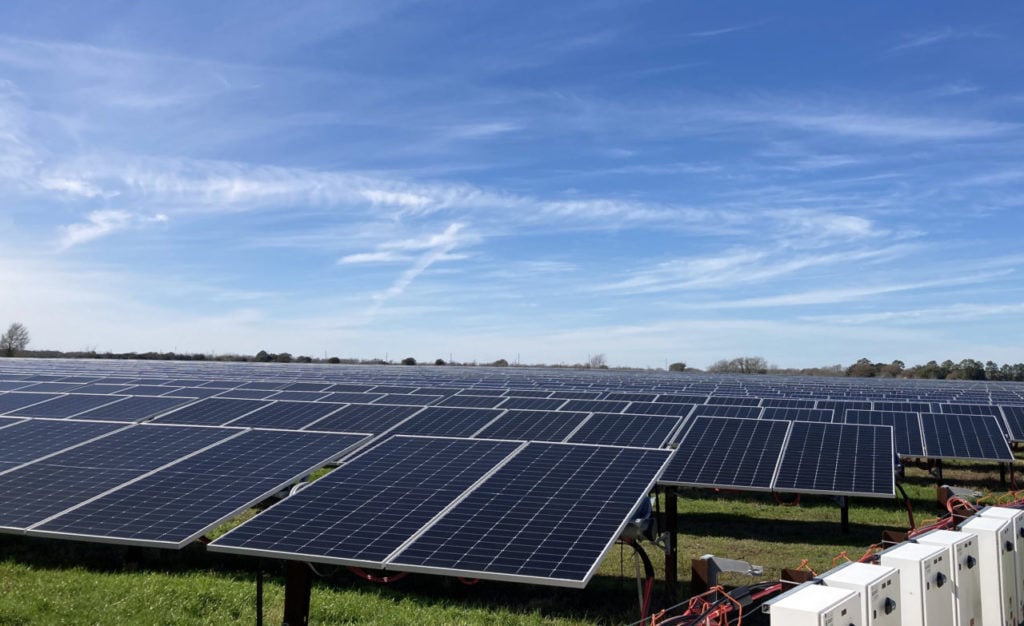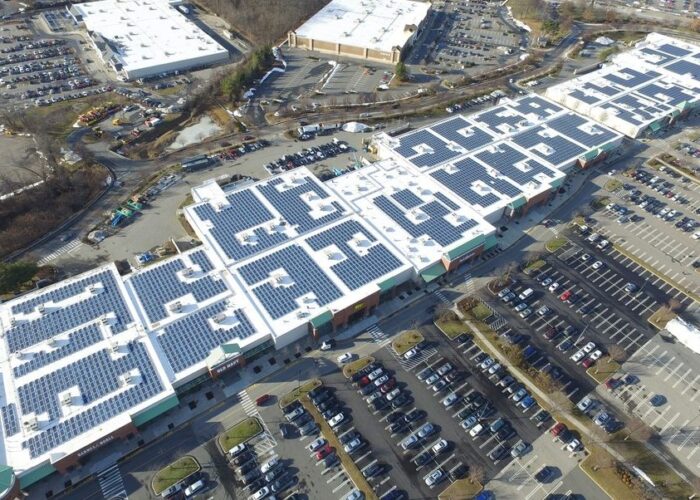
The US added 8.6GW of new operating solar capacity in the third quarter of this year, a record for this quarter, and began solar cell manufacturing for the first time since 2019, as the country looks to expand and reinforce its solar sector.
These are the key takeaways from the latest ‘U.S. Solar Market Insight report’, published today by trade body the Solar Energy Industries Association (SEIA) and analyst Wood Mackenzie. The report notes that solar accounted for 64% of new electricity-generating capacity added to the US grid through the third quarter of this year.
Try Premium for just $1
- Full premium access for the first month at only $1
- Converts to an annual rate after 30 days unless cancelled
- Cancel anytime during the trial period
Premium Benefits
- Expert industry analysis and interviews
- Digital access to PV Tech Power journal
- Exclusive event discounts
Or get the full Premium subscription right away
Or continue reading this article for free
The report also demonstrates that the US has now installed more than 200GW of cumulative capacity, as of the end of the third quarter of 2023, with the utility-scale sector driving much of this change.
As shown in the graph below, the US now has 142.2GW of utility-scale solar capacity in operation, more than three times any of the other sectors profiled. In the third quarter, utility-scale additions accounted for 6.6GW of the 8.6GW of new capacity added, while the commercial and community solar markets saw year-on-year increases in capacity additions of 44% and 12%, respectively.
Looking ahead, the SEIA expects the US to add more than 40GW of new capacity this year, as it did last year, and expects annual installation totals to exceed 43GW until the end of the decade. Should these forecasts be realised, the solar sector alone will be able to power over 71 million homes by 2029.
Alongside the sheer growth in the scale of solar capacity in operation in the US, an increasingly large percentage of this capacity is being co-located with storage systems. SEIA and Wood Mackenzie note that, in 2023, 3GW of new storage systems were paired with utility-scale solar, more than double the capacity deployed in 2022.
Indeed, the companies expect this trend to continue in the distributed sector. As of the end of 2023, just under 12% of new distributed solar projects in the US were built alongside a storage system, and this is forecast to more than double to 28% by 2028.
The return of cell manufacturing
The report also noted that the US produced silicon cells for the first time since 2019, which the SEIA described as a “pivotal” moment for the US solar manufacturing sector. The US has sought to improve the resilience of its manufacturing supply chain in recent years, most notably through the Inflation Reduction Act (IRA) that has sought to incentivise basing renewable energy manufacturing in the US, and a steady stream of home-made solar products will be vital if the US is to reduce its reliance on products made overseas.
Strikingly, solar module imports hit a record 15GW in the fourth quarter of 2023, double the number of panels installed in the US in the same period, highlighting the significant disparity between a sector in which there is considerable interest in new installations, overriding the hesitancy to use more overseas products.
The graph above highlights the US’ current manufacturing capacity for a number of products in both the solar and battery sectors. The report notes that the US commissioned 24GW of new module manufacturing capacity in 2024, more than doubling the cumulative installed module manufacturing capacity in the country.
While the majority of this capacity is not yet in commercial operation – notably all of the ingot, wafer, cell and battery materials manufacturing capacity is either under construction or has just been announced – realising this potential will be vital if the US is to build a more resilient supply chain.
Driven by the IRA
Undoubtedly, much of the impetus for these record-breaking deployment and manufacturing capacity additions comes from the IRA. Components of the legislation, such as the transferable nature of tax credits, has attracted new investors and brought greater liquidity to the sector, and the manufacturing space alone has seen its sector nearly quadruple since the passage of the IRA in August 2022.
Perhaps most encouragingly for the long-term health of the US solar manufacturing space, the IRA has helped spur investment in both manufacturing facilities and the creation of manufacturing jobs, suggesting that these benefits will be felt in the long-term. The graph below compares manufacturing spend in the US solar and storage sectors, alongside the numbers of jobs available in these fields, before and after the passage of the IRA.
Indeed, it is these strong economic foundations that have led analysts, including Wood Mackenzie, to suggest that the re-election of Donald Trump will not likely torpedo the US’ clean energy initiatives, despite his personal skepticism of renewable power. SEIA president and CEO Abigail Ross Hopper said that some of these federal financial incentives had been a key driving force behind economic growth.
“Federal solar policies and increased private investments are strengthening our nation’s energy security and creating thousands of new job opportunities for American workers,” said Hopper. “The US is stepping up to take market share from foreign competitors and making sure that the jobs and economic growth from solar are benefiting American communities.”






